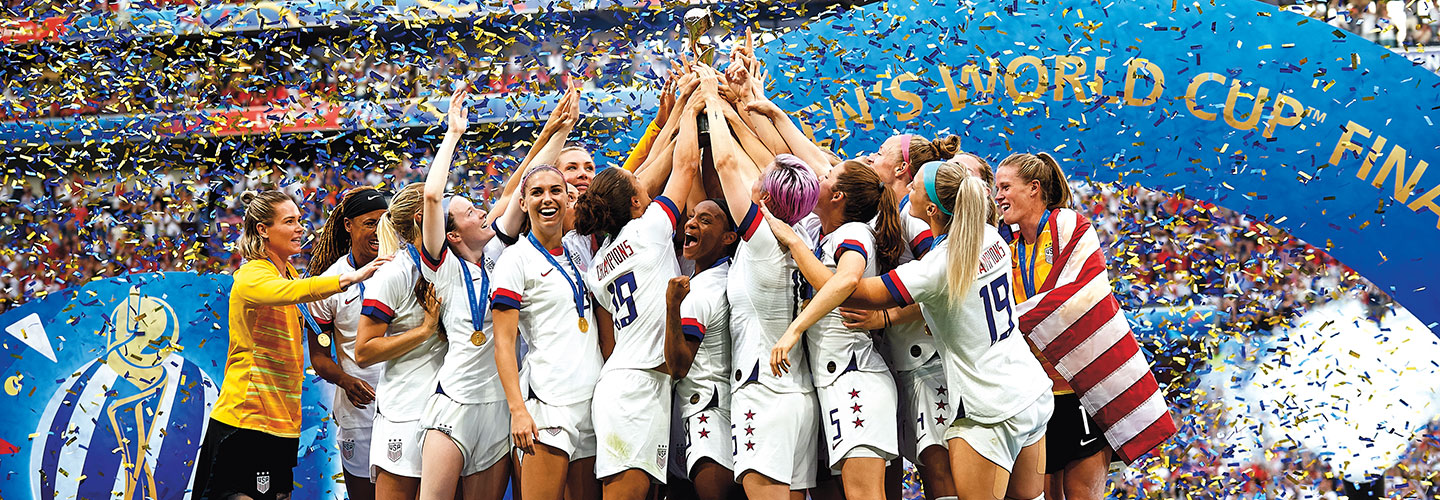Rich Barnes/Getty Images
Celebrating A Big Win
The U.S. women’s soccer team won the World Cup this summer. Now the team’s players and their fans are fighting for something else: equal pay.
In July, the U.S. women’s soccer team won their second straight World Cup. They outscored the other teams 26-3. As the final game ended, players celebrated. Fans broke into a chant. But they didn’t yell “USA!” They didn’t shout the names of the players. They chanted: “Equal pay! Equal pay! Equal pay!”
The American women hadn’t just won a soccer game. They had started a worldwide debate. They are one of the most successful teams in sports. Yet they earn less money than the much less successful U.S. men’s team. Just before the World Cup, the players sued the U.S. Soccer Federation for a raise. The case will go to court in May 2020.
Star players like Megan Rapinoe are leading the fight. She wants fans to do more than cheer at their games. She wants them to ask: Are women treated fairly—in sports and in society? “This is so much bigger than just what’s happening on the field,” she says.
In 2015, the U.S. women’s soccer team won the World Cup. They won it again in 2019. When they won the second time, fans began to chant. But they didn’t yell “USA!” They chanted: “Equal pay! Equal pay! Equal pay!”
The U.S. women’s soccer team is very successful. They are more successful than the U.S. men’s team. Yet the men’s team earns more money. The female players say this isn’t fair. So they sued the U.S. Soccer Federation for a raise. Their case will go to court in May 2020.
Megan Rapinoe is one of the players on the U.S. women’s soccer team. She wants fans to ask: Are women treated fairly in sports? Are they treated fairly in society?
In July, the U.S. women’s soccer team won their second straight World Cup, outscoring the other teams 26-3. As the final game ended, players celebrated and fans broke into a chant. But instead of yelling “USA!” or shouting the names of the players, the fans chanted: “Equal pay! Equal pay! Equal pay!”
The American women hadn’t only won a soccer game—they had started a worldwide debate. They are one of the most successful teams in sports, yet they earn less money than the much less successful U.S. men’s team. So just before the World Cup, the players sued the U.S. Soccer Federation for a raise. The case will go to court in May 2020.
Megan Rapinoe is one of the star players leading the fight. She wants fans to cheer at their games, but also to ask: Are women treated fairly—in sports and in society? “This is so much bigger than just what’s happening on the field,” she explains.

